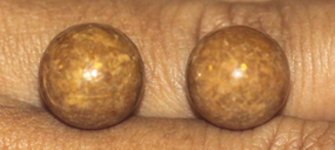boedhyzr
Member
- Joined
- May 28, 2009
- Messages
- 9
Hello my name is Budi from Indonesia. Here in Indonesia, my daily work is by manage some traditional divers fishermans. Mainly we're looking for an Octopus to supplying a seafood manufacturer. Some time we also look for some seashell to supplying some handicraft producers.
When we diving for seashell, often we found some rare natural pearls. What we want to know is, what is the different between natural pearls of pinctada Maxima and pinctada Margaritifera? Because often we found pearls of gold lip oyster in silver color, and from black lip oyster in silver too.
Are they could be in the same group, as the south sea natural pearls? Any idea from other member, that's much experience than we do. About the photos you might be able to check in my profil photo album "Natural Pearls" Thanks a lot.
When we diving for seashell, often we found some rare natural pearls. What we want to know is, what is the different between natural pearls of pinctada Maxima and pinctada Margaritifera? Because often we found pearls of gold lip oyster in silver color, and from black lip oyster in silver too.
Are they could be in the same group, as the south sea natural pearls? Any idea from other member, that's much experience than we do. About the photos you might be able to check in my profil photo album "Natural Pearls" Thanks a lot.

